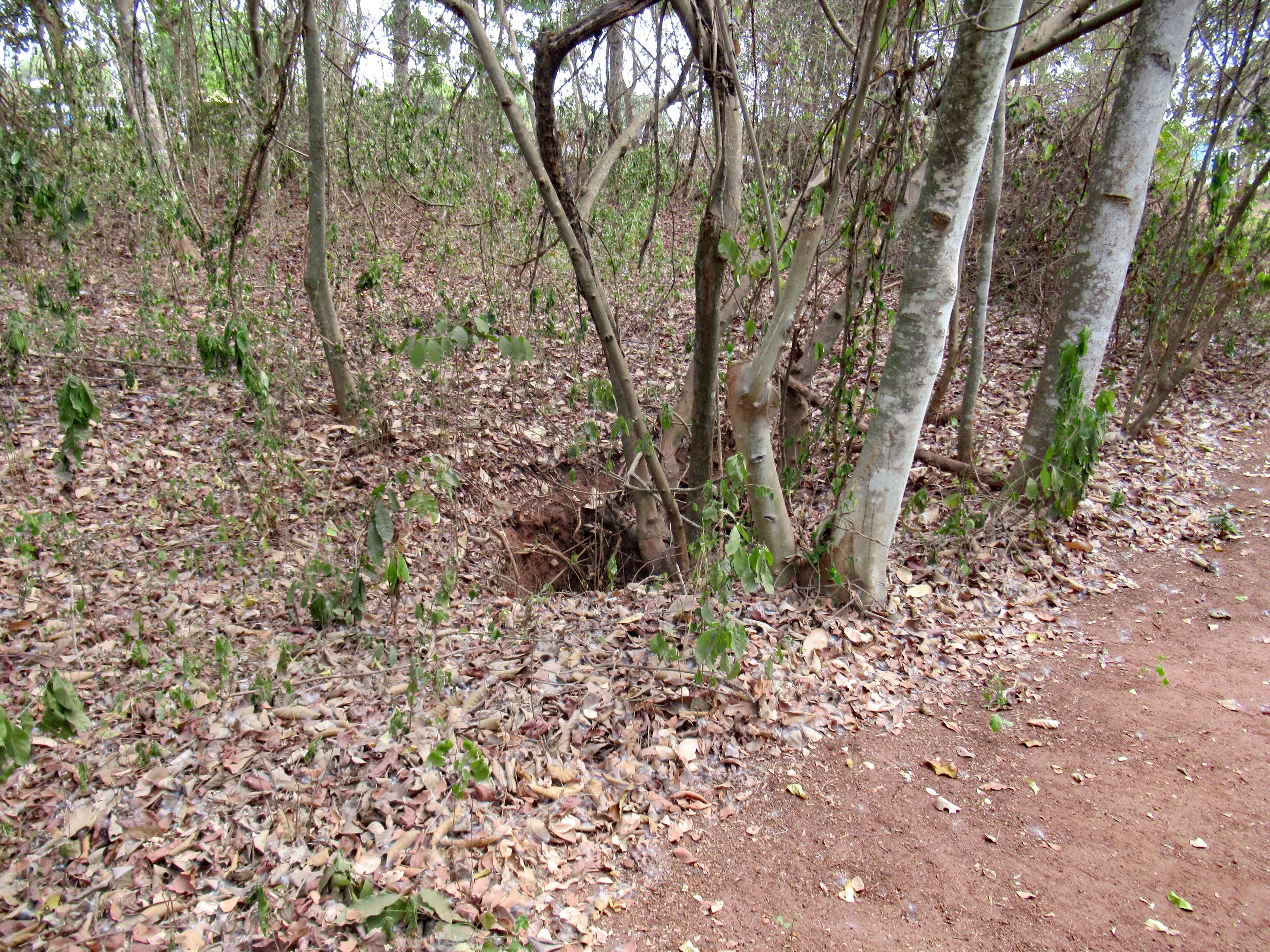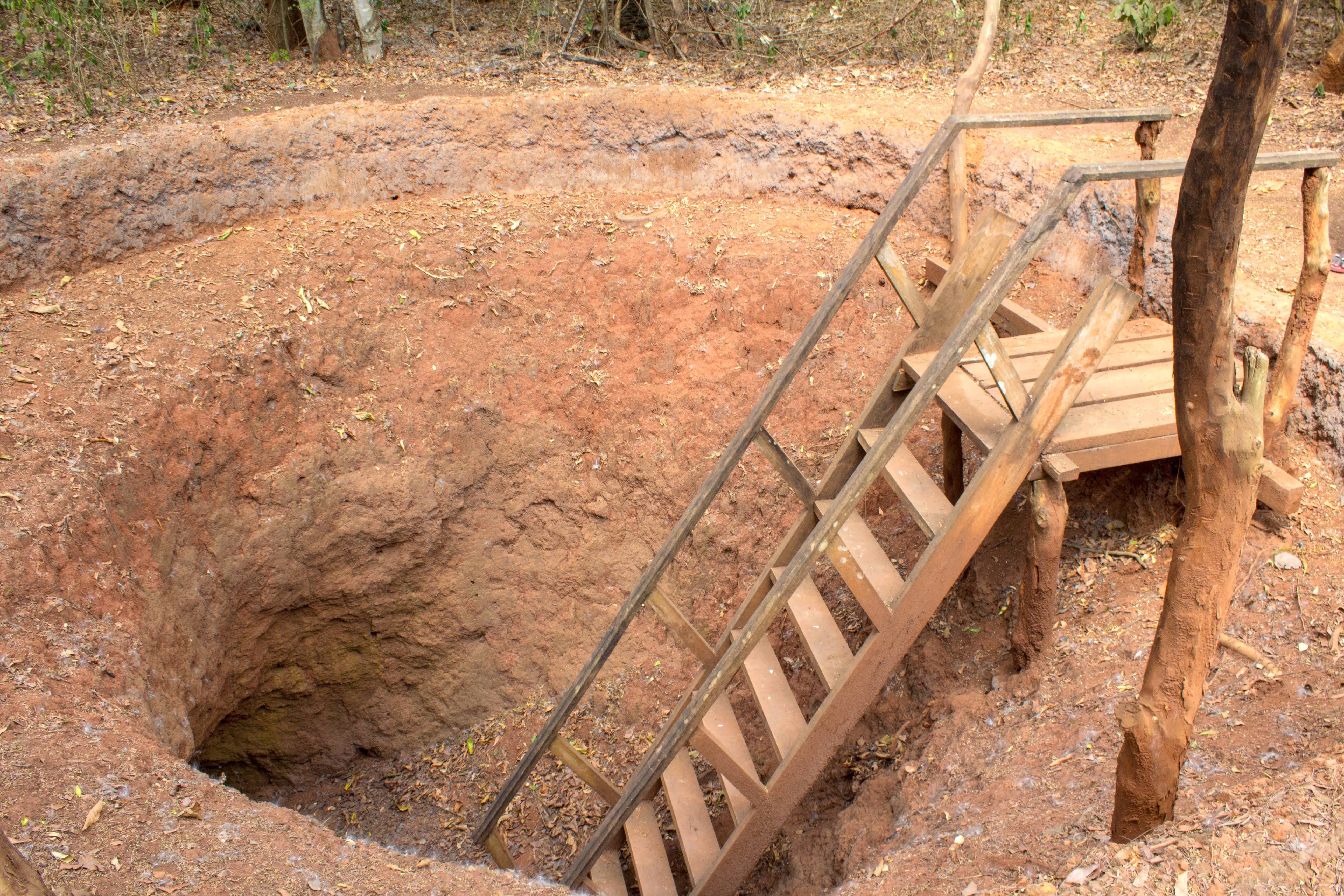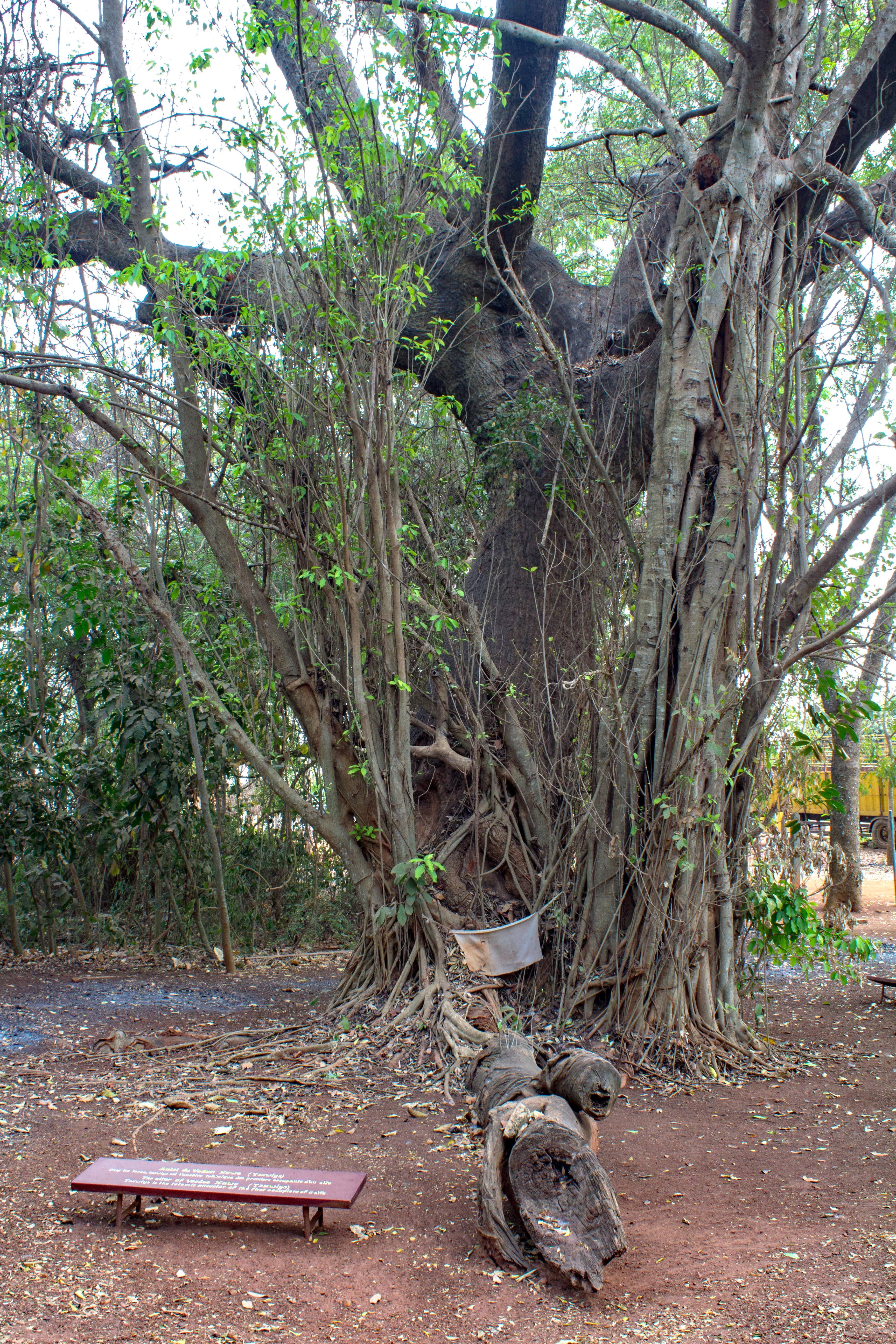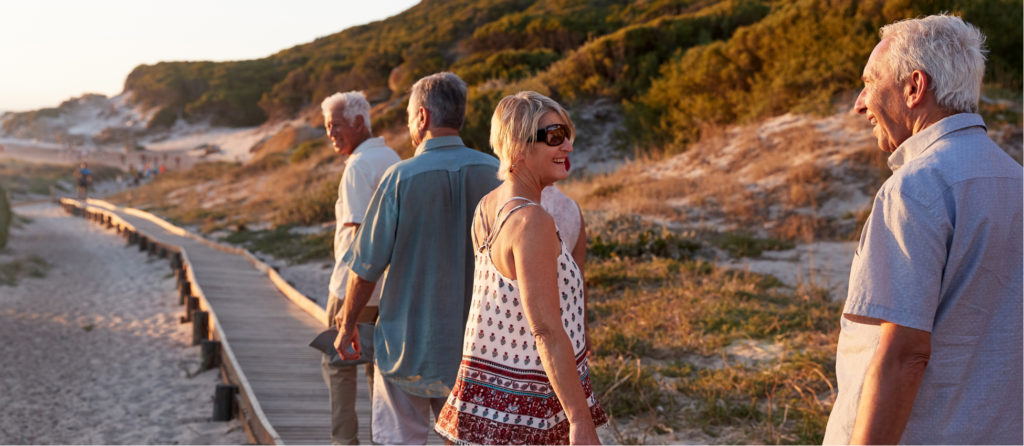When travelling, I’ve often been advised to cover legs, shoulders or head, but never to avoid wearing red. However, on a visit to the underground village of Souterrain Agongointo-Zoungoudo in Benin, our guidebook suggested avoiding the colour for ritual reasons. The village was discovered as recently as February 1998, during the construction of a ring road and according to our itinerary, ‘consists of a series of cellars of the German bunker type, made of tropical ferruginous soil and with different geometric shapes’.
The local guide spoke only French, and our guide translated. Walking on shaded well-trodden paths through a small forest, we came across several holes built in the 16th century during the reign of King Dakodonou, the second King of Abomey. They were designed to protect locals from invaders as well as offering the element of surprise for local warriors when attacking the enemy. The first was a large hole in the ground with a concrete edge and, although steps had been cut into the soil, wooden posts blocked any descent. We were told there were 56 similar homes.
Continuing onwards, we came across two very small holes on either side of the path, which a person probably wouldn’t fit down, and both had thorns around the outside to prevent animals entering.
Finally, we came to a hole we could climb down into, via a solid, steep wooden ladder. Three holes led to what would have been the living area, bedroom, and bathroom, but a great deal of imagination was required as they were not accessible.
Holes over, we continued to the first of several notable trees. The first had a sign in French and English, saying the ‘The Altar of Dan Gbeny – in the Fonnu Pantheon, Dan is the divinity of Properity’ (sic). A second, had a fallen log creating a path up to the shrine with a white sheet tied across the tree and a sign saying, ‘Altar of Voodoo Xawe – the totemic ancestor of the first occupiers of a site’. However, it wasn’t totally clear what they were about.
Trees over, we continued to the small, thatched museum which housed artefacts found during the excavation process, although several pots seemed to be remarkably whole, bearing in mind their age.
Visit over, our guide was amused when we recounted the advice not to wear red, and he told us about a large demonstration in 2017 against the President Faure Gnassingbé who had been in power since 2005. As many of the protesters wore the red, orange, and pink colours of opposition parties, the President from then on hated red.
The site has been on UNESCO World Heritage Tentative List since 1998.







